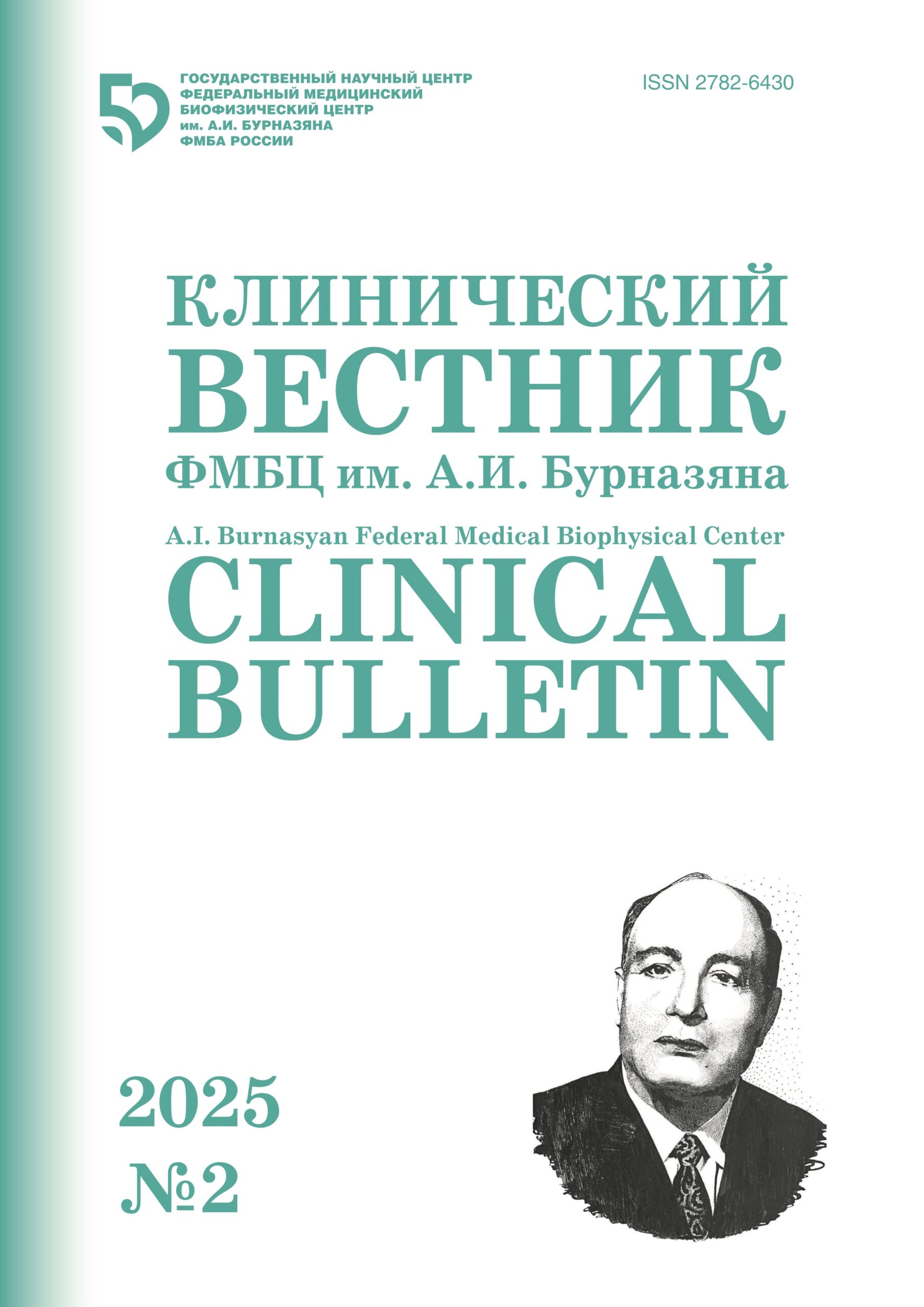A.I. Burnasyan FMBC clinical bulletin. 2025 № 2
T.A. Astrelina, A.O. Zavyalov, D.Yu. Usupzhanova, I.V. Kobzeva, Yu.B. Suchkova, V.A. Brunchukov, M.V. Merkulov,
O.G. Mikhadarkina, V.A. Nikitina, T.F. Malivanova, E.A. Dubova, S.V. Lishchuk, K.A. Pavlov, O.F. Serova, A.S. Samoilov
Comparative evaluation of the coating of extracellular matrix from placenta
of human for regeneration in a chemical burn model
International Office, State Research Center – Burnasyan Federal Medical Biophysical Center of Federal Medical Biological Agency, Moscow, Russiа
Contact person: Astrelina Tatyana Alekseevna: t_astrelina@mail.ru
Abstract
IIntroduction: extracellular matrices (ECM) are a promising material for the production of wound dressings. One of the most accessible sources of ECM is placental tissue. Selection of the optimal protocol for the tissue decellularization stage to obtain ECM is aimed at preserving their regenerative potential and ensuring low immunogenicity.
Objective: to conduct a comparative assessment of human placental ECM dressings obtained using two different decellularization protocols for regeneration in a chemical burn model.
Materials and methods: the main components of the placental tissue decellularization protocols were sodium dodecyl sulfate (SDS protocol) and NaOH (NaOH protocol). The quality of the obtained ECM was assessed using histological and immunohistochemical studies, fluorescence microscopy. Chemical burn was modeled on Wistar rats and damage was treated by applying a VCM coating obtained by two protocols (VCM-SDS and VCM-NaOH). The course of the wound process was assessed by planimetric and histological methods.
Results: the SDS protocol ensured a higher degree of VCM purification from residual cellular and nuclear material. In turn, the VCM obtained by the NaOH protocol (VCM-NaOH) demonstrated the widest range of functionally significant components. The total area of the wound surface on day 42 was significantly smaller in the group of animals receiving therapy in the form of a VCM-NaOH wound coating; histological assessment of the inflammation parameters confirmed the observed positive dynamics.
Conclusions. Obtaining ECM using the SDS protocol (ECM-SDS) ensures more effective elimination of residual cellular components, but at the same time reduces its regenerative potential compared to the NaOH protocol, which is probably due to the loss of ECM-SDS during the decellularization of components that play an important role in the process of burn wound regeneration.
Keywords: decellularization, extracellular matrix, placenta, wound covering, regenerative potentiay
For citation: Astrelina TA, Zavyalov AO, Usupzhanova DYu, Kobzeva IV, Suchkova YuB, Brunchukov VA, Merkulov MV, Mikhadarkina OG, Nikitina VA, Malivanova TF, Dubova EA, Lishchuk SV, Pavlov KA, Serova O.F., Samoilov AS. Comparative Evaluation of the Coating of Extracellular Matrix from Placenta of Human for Regeneration in a Chemical Burn Model . A.I. Burnasyan Federal Medical Biophysical Center Clinical Bulletin. 2025.2:52-58. (In Russian) DOI: 10.33266/2782-6430-2025-2-52-58
REFERENCES
- Alekseyev A.A., Popov S.V. Principles of Organizing and Providing Medical Care to Burn Victims: Collection of Abstracts of the Conference Aktual’nyye Voprosy Lecheniya Termicheskoy Travmy = Current Issues of Thermal Injury Treatment, Yakutsk, September 7-11, 2015. Kombustiologiya = Combustiology. 2015;55:13-14 (In Russ.).
- Ozhogi Termicheskiye i Khimicheskiye. Ozhogi Solnechnyye. Ozhogi Dykhatel’nykh Putey = Thermal and Chemical Burns. Sunburns. Respiratory Tract Burns. Clinical Guidelines. Moscow, Ministry of Health of the Russian Federation Publ., 2017. 118 p. (In Russ.). URL: https://cr.minzdrav.gov.ru/recomend/687_1
- Kuznetsov V.A., Popov S.V. Chemical Burns: Pathogenesis, Clinical Features, Treatment. Kombustiologiya = Combustiology. 2003:16–17 (In Russ.). URL: https://combustiolog.ru/journal/himicheskie-ozhogi-patogenez/klinika-lechenie
- Isayeva Ye.V., Beketov Ye.Ye., Arguchinskaya N.V., Ivanov S.A., Shegay P.V., Kaprin A.D. Decellularized Extracellular Matrix for Tissue Engineering (Review). Sovremennyye Tekhnologii v Meditsine = Modern Technologies in Medicine. 2022;14;3:57 (In Russ.).
- Cramer M.C., Badylak S.F. Extracellular Matrix-Based Biomaterials and their Influence Upon Cell Behavior. Ann Biomed Eng. 2020;48;7:2132–2153.
- Sarvari R., Keyhanvar P., Agbolaghi S., et al. A Comprehensive Review on Methods for Promotion of Mechanical Features and Biodegradation Rate in Amniotic Membrane Scaffolds. J. Mater Sci.: Mater. Med. 2022;33:32.
- Ji W., Wen J., Lin W., He P., Hou B., Quan S. Comparing the Characteristics of Amniotic Membrane-, Endometrium-, and Urinary-Derived ECMs and their Effects on Endometrial Regeneration in a Rat Uterine Injury Model. Front. Bioeng. Biotechnol. 2022;10:861496.
- Kawecki M., Łabuś W., Klama-Baryla A., et al. A Review of Decellurization Methods Caused by an Urgent Need for Quality Control of Cell-Free Extracellular Matrix’ Scaffolds and their Role in Regenerative Medicine. J. Biomed. Mater. Res. 2018 Feb;106;2:909-923. doi: 10.1002/jbm.b.33865
- Khosravimelal S., Momeni M., Gholipur M., et al. Protocols for Decellularization of Human Amniotic Membrane. Methods Cell Biol. 2020;157:37-47. doi: 10.1016/bs.mcb.2019.11.004
- Lakkireddy C., Vishwakarma S.K., Raju N., et al. Fabrication of Decellularized Amnion and Chorion Scaffolds to Develop Bioengineered Cell-Laden Constructs. Cell Mol Bioeng. 2021 Sep;15;1:137-150. doi: 10.1007/s12195-021-00707-7.
Conflict of interest. The authors declare no conflict of interest.
Financing. The study had no sponsorship.
Contribution. Article was prepared with equal participation of the authors.
Article received: 11.02.2025. Accepted for publication: 28.02.2025


